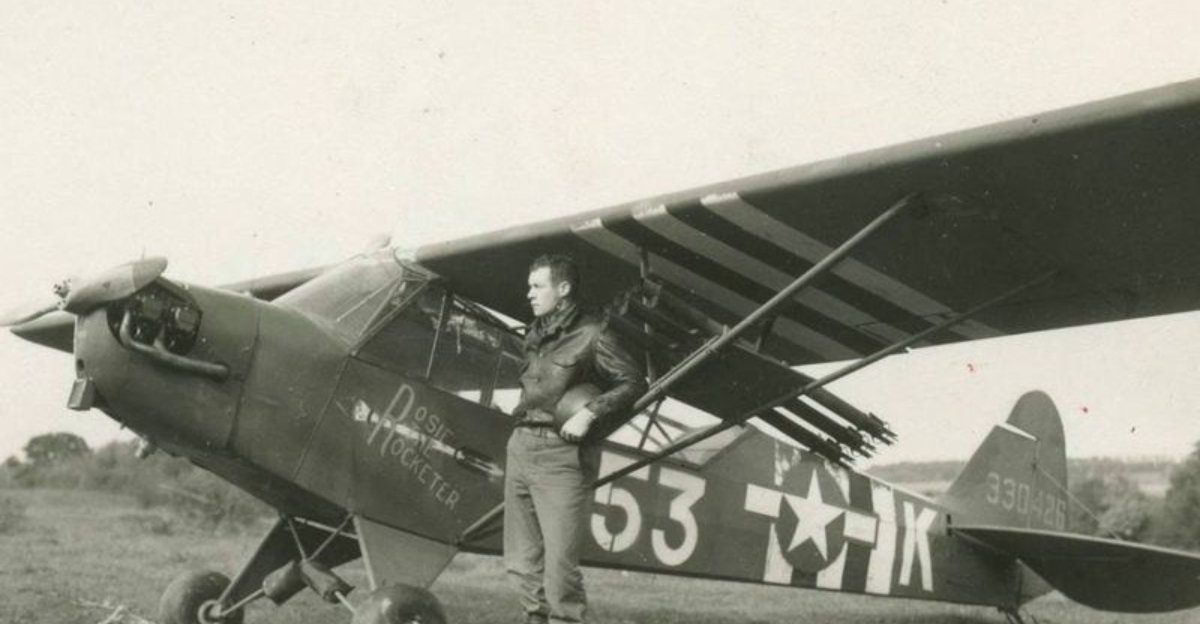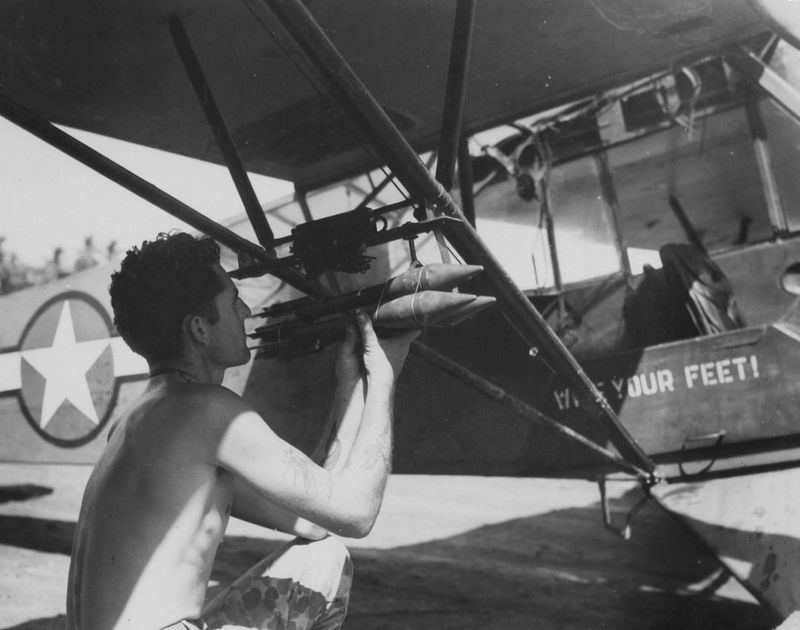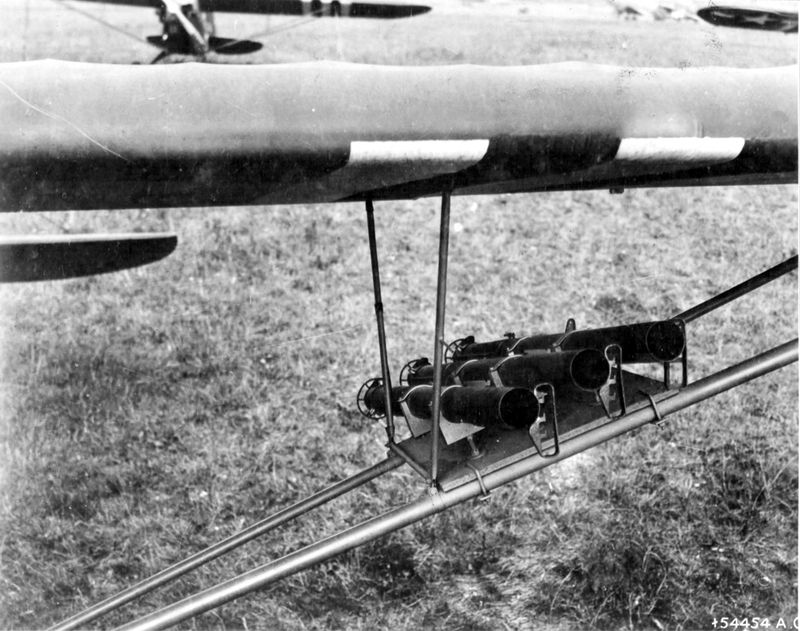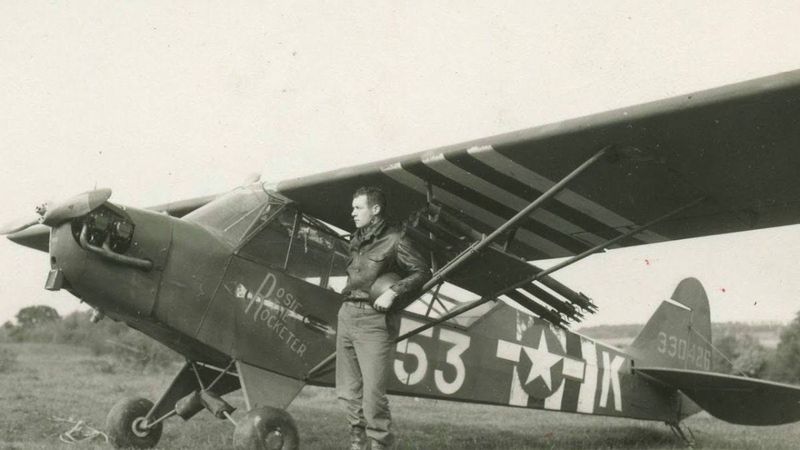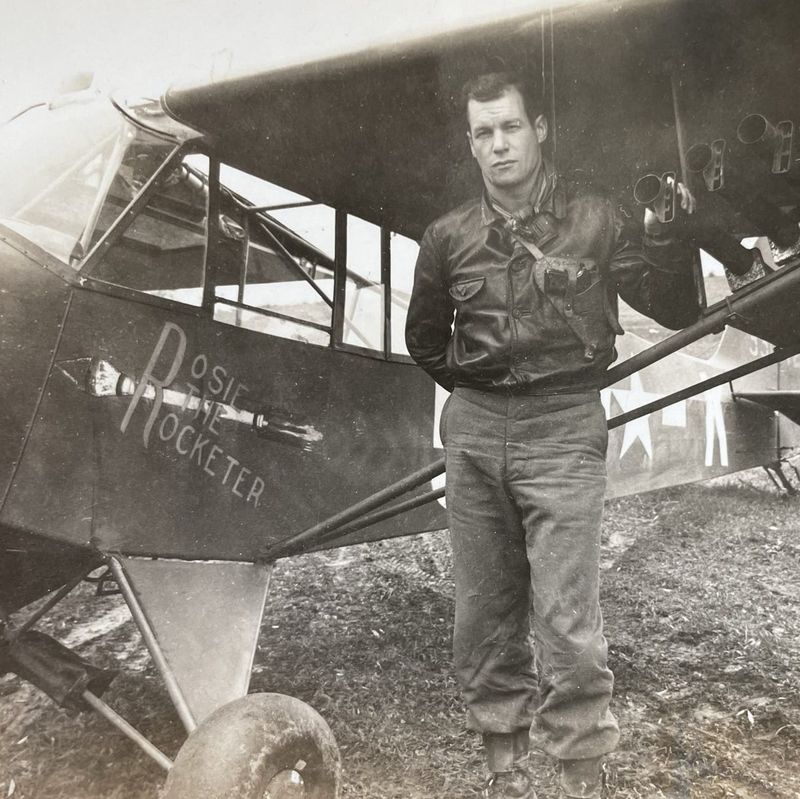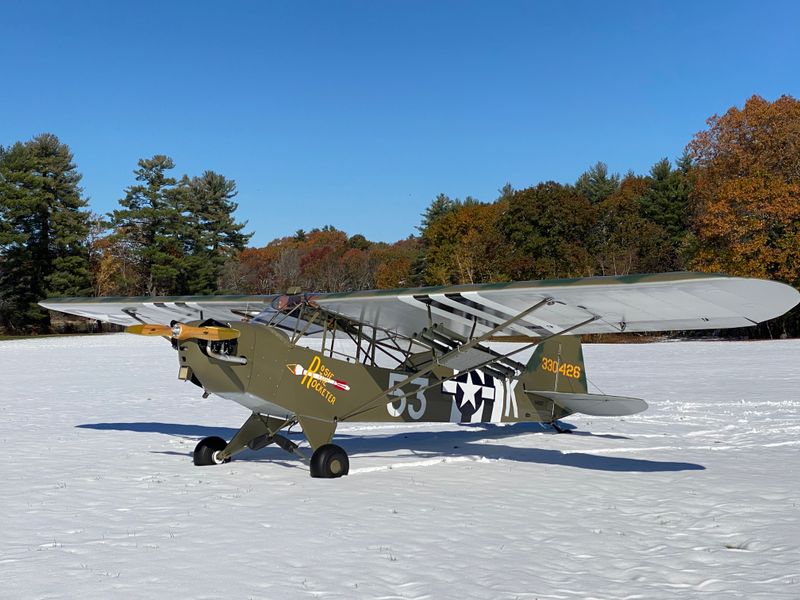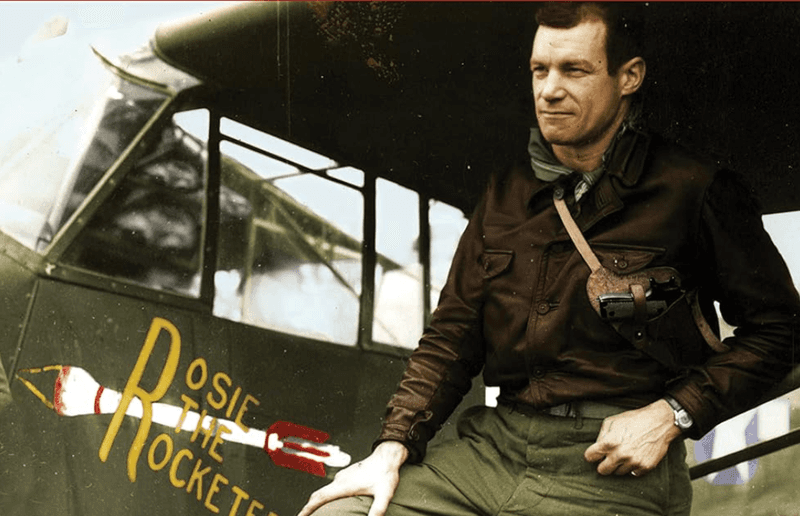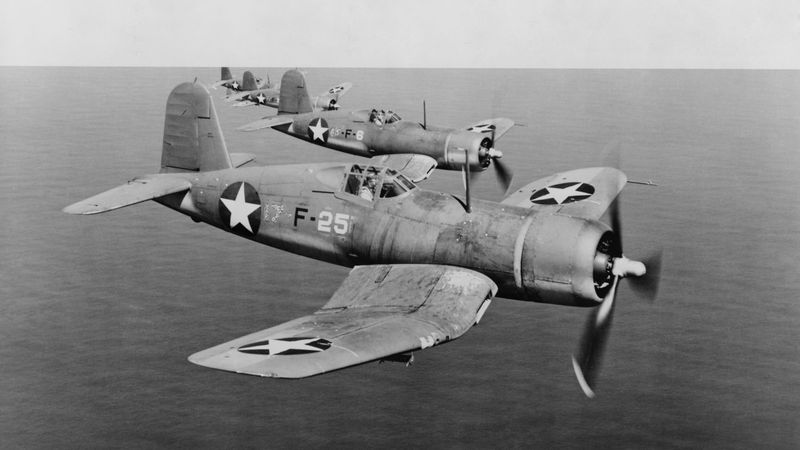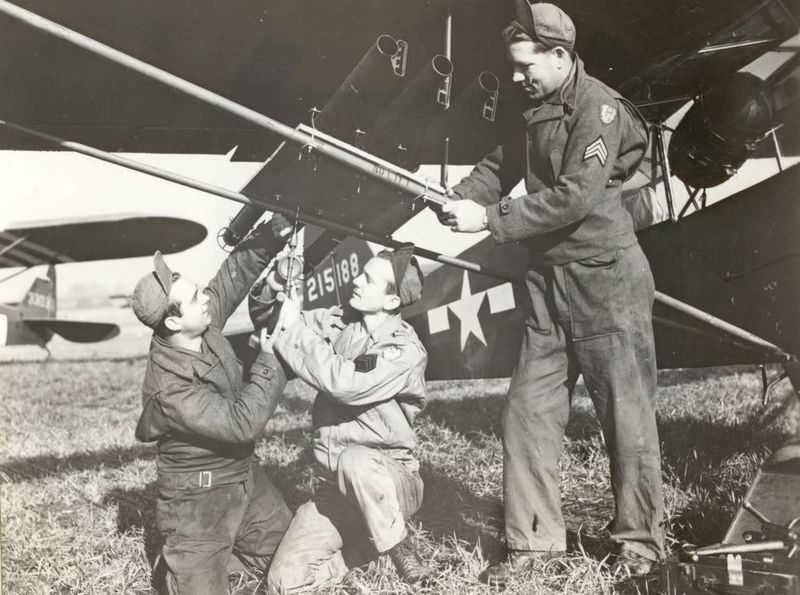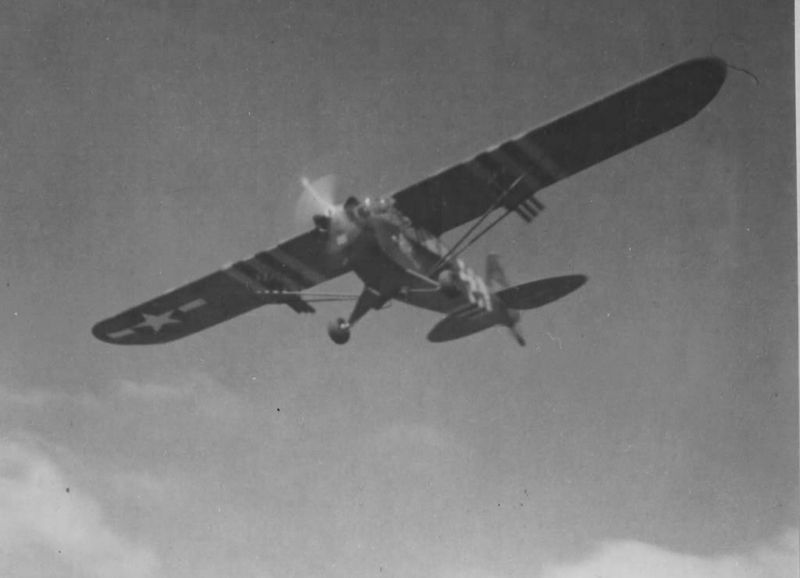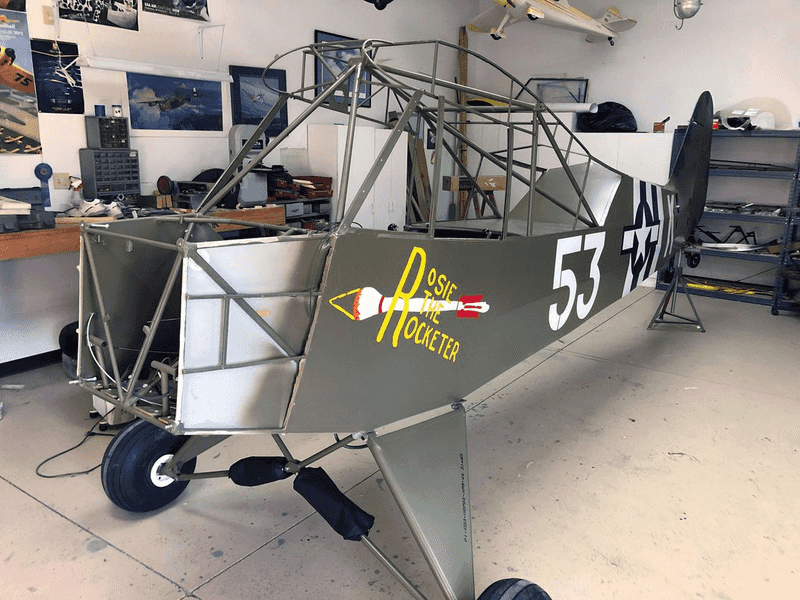When you think of World War II combat aircraft, you probably imagine powerful bombers or sleek fighter jets. But one American soldier defied expectations—and enemy forces—by turning a light reconnaissance plane into a fearsome tank-killer. Meet Major Charles “Bazooka Charlie” Carpenter, the pilot who gave new meaning to the phrase “air support.” His story sounds like something out of a war movie—but every word is true.
1. His Plane Was Never Meant for Combat
Carpenter flew the L-4 Grasshopper, a small, unarmed liaison aircraft based on the civilian Piper Cub. Its original job? Recon, artillery spotting, and courier runs. It wasn’t armored. It wasn’t fast. And it definitely wasn’t supposed to fight tanks. Carpenter, however, saw potential in its simplicity and maneuverability. Using these to his advantage, he transformed its humble role into something extraordinary. With no initial intention for combat, this aircraft became an unlikely hero of the skies. This dramatic shift in purpose set the stage for Carpenter’s daring missions and legendary status as a tank destroyer.
2. He Strapped Bazookas to the Wings
Frustration can fuel innovation. Carpenter, tired of his plane’s limitations, decided to take matters into his own hands. He mounted bazookas—actual infantry rocket launchers—on the wings of his Grasshopper. Imagine the sight: a tiny plane now armed to the teeth. First two bazookas, then six, creating a unique aerial assault craft. This transformation was not just about added firepower. It was a bold statement of creativity and defiance. Carpenter’s modification made his plane one of the most unusual attack craft in the war, catching both allies and enemies by surprise.
3. He Took Out Nazi Tanks With a Piper Cub
Yes, really. Carpenter destroyed at least six German tanks, plus a host of armored vehicles. His strategy? Dive low, fire rockets, and escape just in time. Flying close enough to hear bullets hit his plane, Carpenter’s nerves of steel ensured his success. The Piper Cub, not designed for combat, became a deadly threat. Carpenter’s actions confused enemy troops, who never expected this small aircraft to attack. His achievements demonstrated the impact of unconventional tactics. They changed perceptions of air combat capabilities, proving that bravery and ingenuity could overcome technological limitations.
4. “Bazooka Charlie” Was Born
The legend quickly grew. Carpenter’s fellow soldiers, amazed by his exploits, nicknamed him “Bazooka Charlie.” He embraced the moniker. War correspondents heard the stories and started spreading them across the globe. Carpenter became a symbol of ingenuity and audacity. His nickname reflected not only his weapon of choice but also his fearless attitude. This new identity resonated with troops and the public. It was a testament to his unique contribution to the war effort. As “Bazooka Charlie,” Carpenter’s reputation soared, marking him as an icon of creative warfare.
5. He Named His Plane “Rosie the Rocketer”
In true WW2 fashion, Carpenter gave his modified Grasshopper a name: Rosie the Rocketer. This nod to “Rosie the Riveter” symbolized the empowerment and contribution of women during wartime. Rosie, however, didn’t just build rockets—she launched them. This playful yet powerful name captured the spirit of Carpenter’s missions. It added personality to the machine and highlighted its unique role. Naming his plane was more than a whimsical choice. It was an assertion of identity and purpose, turning an ordinary aircraft into a symbol of courage and creativity.
6. He Flew Solo and Low
Unlike bomber crews with multiple gunners and copilots, Carpenter often flew solo. He flew low enough to be seen by enemy troops, relying on surprise and his plane’s agility to dodge return fire. This daring approach left German troops stunned. They were unprepared for such an audacious attack from a tiny aircraft. Carpenter’s solo flights added an element of risk and excitement to each mission. His courage in flying at low altitudes made his assaults even more effective. Carpenter’s unique tactics showcased the power of individual initiative in wartime.
7. He Survived Intense Combat… Barely
During one mission, Carpenter was hit by shrapnel but still managed to fly his damaged aircraft back to safety. His plane was frequently riddled with bullet holes. Yet each time, Rosie was patched up and sent back into action. Carpenter’s resilience in the face of danger was remarkable. His survival against the odds added to his legendary status. The constant risk and damage underscored the perilous nature of his missions. Carpenter’s ability to overcome these challenges highlighted his determination and skill. It was a testament to his unyielding spirit.
8. He Inspired a Generation of Pilots
Bazooka Charlie’s boldness became legend among U.S. forces. His out-of-the-box tactics proved that courage and creativity could be just as important as firepower. Some credit his unorthodox missions with helping to shift military perspectives on close air support. Carpenter’s story inspired a generation of pilots to think differently. His legacy is a reminder that innovation can arise from unexpected places. The lessons of his bravery and ingenuity continue to influence military tactics. Carpenter’s influence extended beyond his missions, shaping the future of aerial warfare.
9. His Feats Made Headlines
Carpenter’s story appeared in Stars and Stripes, The New York Sun, and more. It captured the imagination of readers back home. He became one of the most famous Grasshopper pilots of the war. Few could believe the feats of this creative pilot. His exploits made headlines, turning him into a national hero. The public was fascinated by his story, which seemed stranger than fiction. Carpenter’s media presence highlighted his impact on the war effort. His tale of bravery and innovation resonated with a nation seeking hope and inspiration.
10. His Plane Was Recently Restored
In 2020, aviation buffs and historians restored “Rosie the Rocketer” to flying condition, complete with replica bazookas. The restoration project honored Carpenter’s legacy. It reminded the world of one of WW2’s wildest personal war machines. The restoration process involved meticulous attention to detail. It aimed to capture the spirit of Rosie as a symbol of innovation and courage. This project celebrated Carpenter’s contributions, preserving his story for future generations. The restored plane serves as a tribute to an unconventional hero and his incredible wartime achievements.
